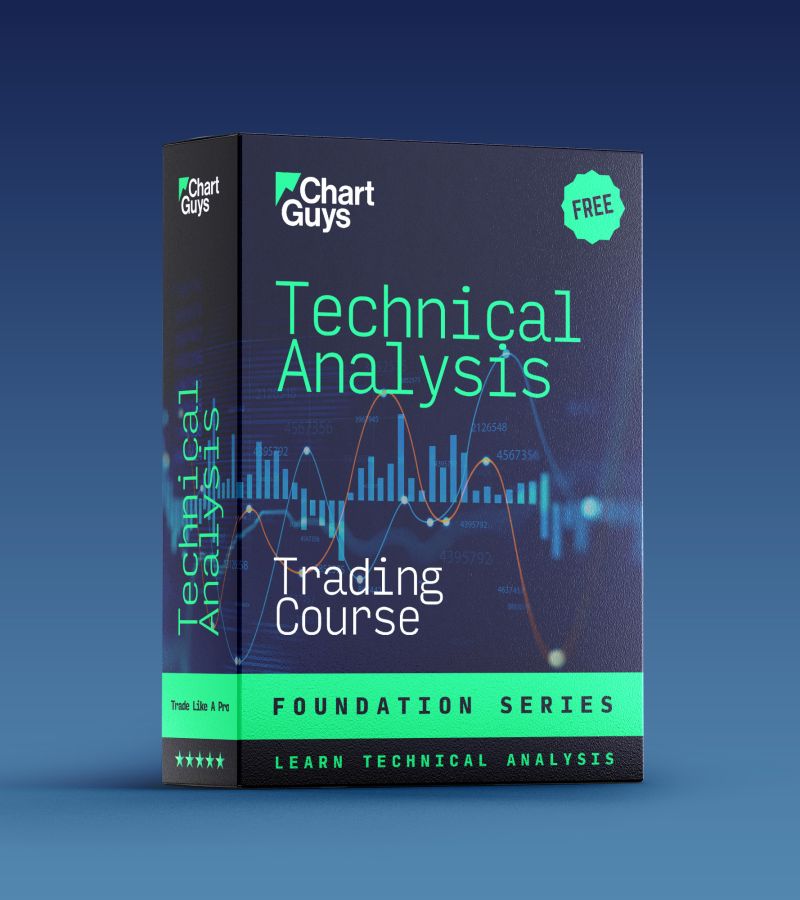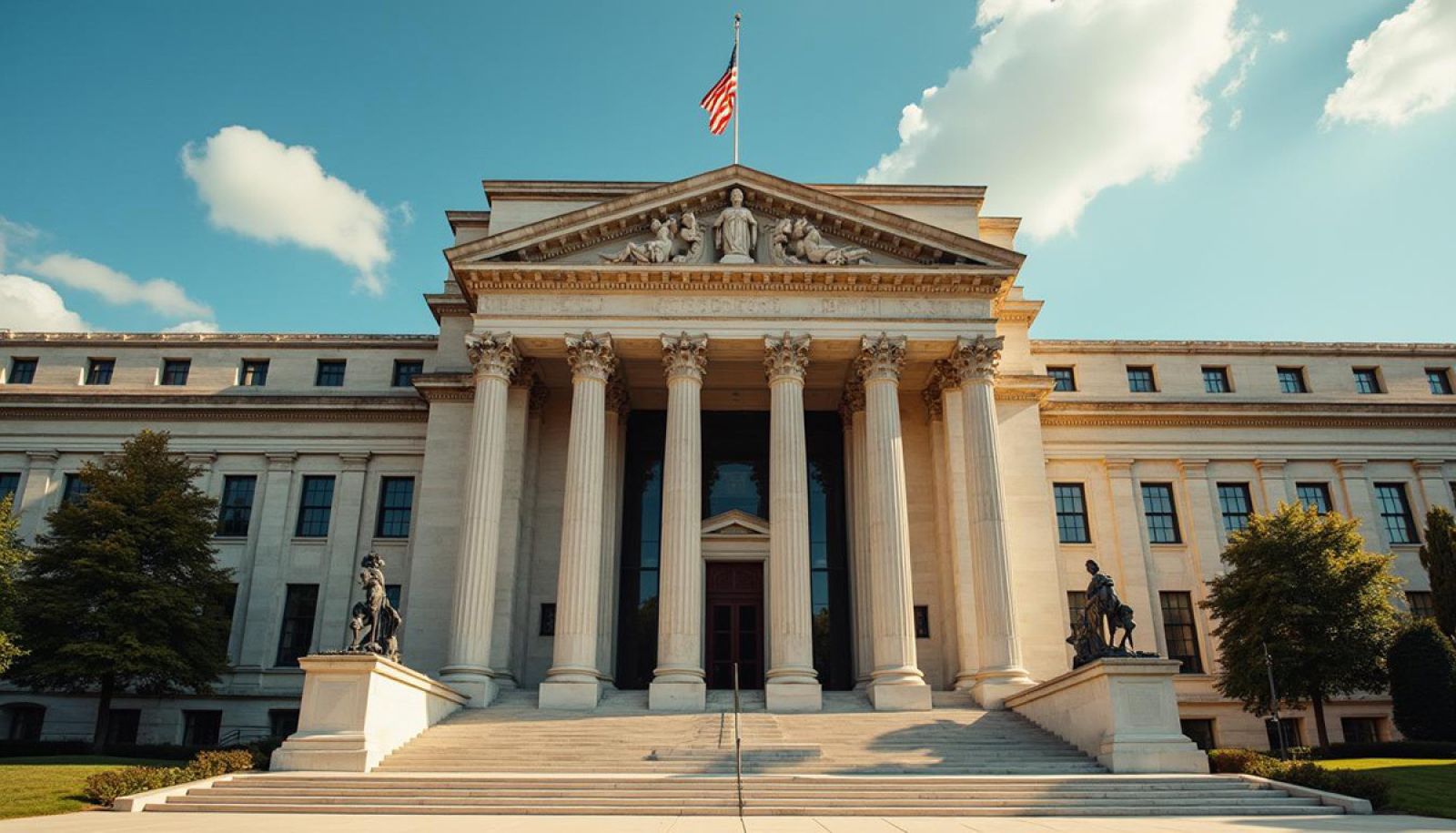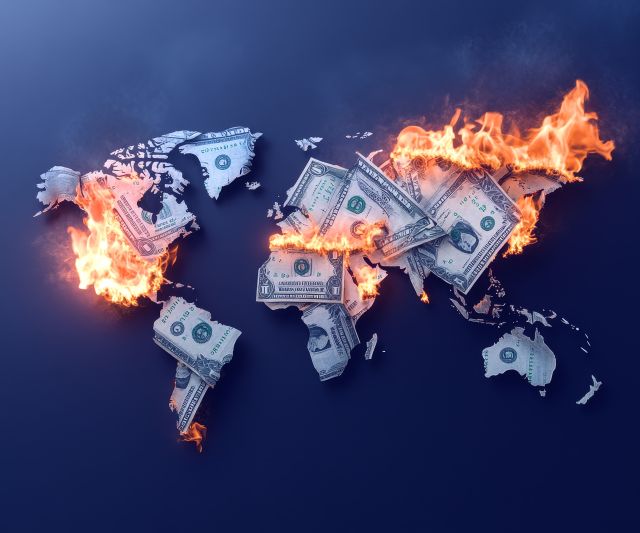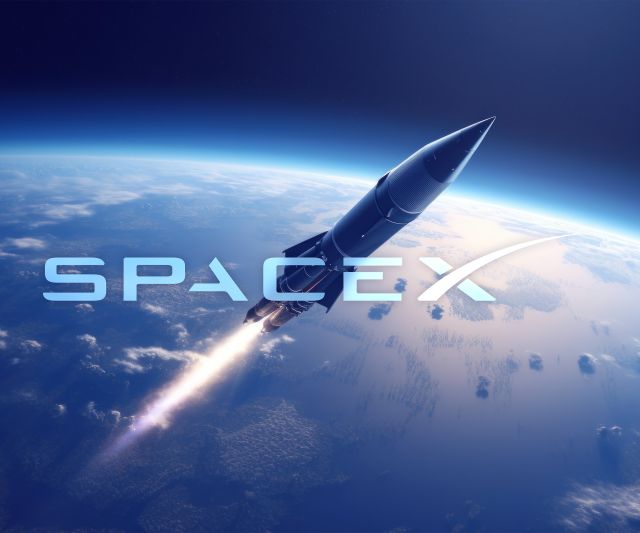The Ripple Effect of Trade Policies
In the vast dance of global economics, few policy instruments create ripples quite like tariffs. These seemingly simple taxes on imported goods connect our financial cosmos in ways both obvious and subtle.
When leaders announce new tariffs, the effects don't just alter price tags—they send tremors through investment portfolios across continents.
Consider what we've witnessed in recent months: a single tariff announcement sent the S&P 500 tumbling nearly 5% in a day, wiping out trillions in market value as investors grappled with the implications of new trade barriers ranging from 10% on most imports to staggering rates like 46% on Vietnamese goods.
This wasn't just numbers on a screen—it represented real retirement accounts, college funds, and business capital suddenly shrinking.
The Invisible Connection
But why? What invisible threads connect government trade policies to your investment portfolio? The relationship is fascinating and surprisingly personal.
Tariffs represent one of humanity's oldest economic tools, dating back to ancient civilizations. Yet their modern impact is magnified through global supply chains and lightning-fast markets that react to tweets and policy announcements within seconds.
In a world where financial information travels at the speed of light, tariff policies create immediate market reactions long before the actual economic impacts materialize.
While designed to protect domestic industries, tariffs create uncertainty that disrupts business planning, alters consumer behavior, and forces investors to recalibrate risk assessments across entire sectors.
Why It Matters
Understanding how tariffs influence markets isn't just academic—it's essential knowledge for anyone with investments, which today means nearly everyone.
Whether you're actively managing a portfolio or passively watching your retirement account, tariff policies touch your financial future.
And as we'll explore, these impacts go far beyond the immediate market reactions to shape long-term economic trajectories that determine not just stock values, but job markets, inflation rates, and ultimately, our collective prosperity.
In this exploration, we'll decode the complex relationship between trade barriers and market performance, examining both theoretical frameworks and real-world consequences that affect investors, consumers, and citizens alike.
The Mechanics of Tariffs
What exactly is a tariff?
A tariff is essentially a tax imposed on goods imported from other countries. Think of it as an entrance fee that foreign products must pay to access your country's market. These taxes are typically calculated as a percentage of the product's value (ad valorem tariffs) or as a fixed amount per unit (specific tariffs).
Did you know? The word "tariff" comes from the Italian word "tariffa," which itself derives from the Arabic "ta'rif," meaning "notification" or "information."
Q: Why do governments implement tariffs?
A: Governments implement tariffs for various reasons:
- To protect domestic industries from foreign competition
- To raise revenue for government spending
- To address trade imbalances with specific countries
- As leverage in international negotiations
- To respond to unfair trade practices like dumping
Q: How do tariffs actually work in practice?
A: When a company imports goods subject to tariffs, the importing business typically pays the tariff to customs authorities before the goods can enter the country. Those costs are usually passed along the supply chain, eventually reaching consumers as higher prices.
Pro Tip: When analyzing the impact of tariffs on specific companies, look beyond their direct imports. Consider their entire supply chain, as tariffs on raw materials or components can affect production costs even for "domestic" manufacturers.
Common Misconceptions About Tariffs
Myth: Foreign countries pay tariffs directly to the imposing government.
Reality: Importers (usually domestic companies) pay the tariffs, then typically pass these costs to consumers.
Myth: Tariffs always benefit the domestic economy.
Reality: While protecting some industries, tariffs can raise prices for consumers, increase manufacturing costs, and trigger retaliatory measures from trading partners that harm exporters.
Myth: Tariffs and quotas are the same thing.
Reality: Unlike tariffs (taxes), quotas are limits on the quantity of goods that can be imported during a specific period.
Q: How are tariff rates determined?
A: Tariff rates vary widely and can be set through:
- International trade agreements
- Executive orders from heads of state
- Legislative action
- Recommendations from trade authorities
Recent examples show how variable these rates can be, with President Trump's 2025 tariffs ranging from 10% on general imports to 34% on Chinese goods and 46% on Vietnamese imports.
Quick Tip: When evaluating tariff impacts on a stock, consider the company's ability to absorb higher costs or pass them to customers. Companies with strong pricing power fare better during tariff increases.
Q: What's the difference between tariffs and other trade barriers?
A: While tariffs are direct taxes on imports, other trade barriers include:
- Import quotas (restrictions on quantity)
- Technical barriers (regulations, standards, certification requirements)
- Subsidies to domestic producers
- Currency manipulation
- Administrative or procedural obstacles
Did you know? According to the World Trade Organization, the new U.S. tariffs along with earlier measures could cause global merchandise trade volumes to contract by around 1% in 2025.
The Bottom Line
Tariffs represent one of the most direct ways governments intervene in international trade, with immediate effects on prices and market access. While simple in concept, their implementation creates complex ripple effects throughout supply chains and financial markets. Understanding these mechanics is essential for investors navigating markets during periods of trade tension.
Immediate Market Reactions to Tariff Announcements
Here's the thing about markets: they hate surprises—especially ones that threaten the free flow of goods across borders. When tariff announcements hit the news, markets don't wait for the actual economic impact to materialize; they react immediately to the anticipated consequences.
Think of stock markets as an enormous, interconnected nervous system that responds to tariff news like your hand reacts to touching a hot stove. The reaction happens before the conscious assessment of damage.
That's exactly what we witnessed in early April 2025, when President Trump's sweeping tariff announcement triggered one of the worst days for U.S. stock markets in five years. The S&P 500 plummeted 4.84%, the Nasdaq nosedived nearly 6%, and the Dow Jones Industrial Average shed an eye-watering 1,700 points.
The market reaction is like an earthquake
The epicenter hits the directly affected industries first. Companies with significant exposure to the targeted countries see immediate sell-offs. The recent automotive tariffs, for instance, forced Nissan's Infiniti brand to indefinitely pause production of Mexico-built crossovers destined for the U.S. market—news that sent automotive stocks tumbling.
Then come the aftershocks. Suppliers, retailers, and adjacent industries feel the secondary tremors as investors recalibrate expectations for entire supply chains.
Think of it this way... Imagine you're watching a game of financial dominoes. The tariff announcement knocks over the first domino—perhaps retail stocks that rely on Chinese imports. But that's just the beginning. Those retailers buy advertising, lease commercial space, hire employees, and purchase technology services. Each of these connected sectors represents another row of dominoes potentially at risk.
The initial reaction often triggers a risk-reassessment process that can snowball. That's why we saw the S&P 500 shed a staggering $4 trillion in market value since its February peak after the recent tariff announcements—far more than the direct economic impact of the tariffs themselves.
Sectoral sensitivity varies wildly
Some sectors curl up in a defensive ball when tariff news breaks:
- Technology hardware companies with global supply chains
- Automotive manufacturers reliant on imported parts
- Retailers with thin margins and limited pricing power
- Agricultural exporters vulnerable to retaliatory tariffs
Others might shrug or even rally:
- Domestic manufacturers protected by the tariffs
- Utilities and real estate with minimal trade exposure
- Defense contractors during heightened geopolitical tension
Remember: The initial market reaction doesn't necessarily reflect the long-term impact. Markets often overshoot in both directions, creating potential opportunities for level-headed investors who can see beyond the initial panic.
The psychology behind the plunge
Market reactions to tariffs aren't purely economic—they're psychological. As economist Jana Grittersová explains, tariff uncertainty disrupts predictability, making it difficult for companies to forecast earnings and supply chain costs, while investors demand higher returns for holding riskier assets.
Think of uncertainty as an additional premium investors demand. When policies shift unpredictably, that premium rises, pushing stock valuations down even before any actual economic damage occurs.
Remember: According to Goldman Sachs Research, sustained tariffs similar to those recently announced could reduce S&P 500 earnings by 2-3% and cause the index's fair value to decline about 5% in the near term. But initial market reactions often exceed these rational calculations due to uncertainty premiums and margin calls forcing liquidations.
The first market moves after tariff announcements tell us something important, but they're just the opening chapter in a much longer economic story.
Sector-by-Sector Analysis
When tariffs ripple through the global economy, their impact isn’t evenly distributed. Some sectors absorb the blow, others fracture. Understanding which industries sit in the blast radius—and which ones stand to benefit—is essential for navigating tariff-fueled volatility.
In this section, we break down how different sectors react to trade tensions, from automakers scrambling to reroute supply chains to retailers squeezed between rising costs and shrinking consumer wallets. Some sectors wilt under pressure. Others adapt—or even thrive.
Let’s zoom in and examine how tariffs hit the economy one sector at a time.
Automotive and Manufacturing: The Front Line
The automotive industry stands directly in the crosshairs of tariff policies, with complex global supply chains particularly vulnerable to trade disruptions.
Recent evidence shows the immediate impact: Nissan's Infiniti brand indefinitely paused production of Mexico-built crossovers for the U.S. market in direct response to the newly imposed 25% tariffs on imported vehicles.
When manufacturing crosses borders multiple times during production, tariffs can compound at each crossing, multiplying the final impact on prices and margins.
Key vulnerabilities:
- Just-in-time inventory systems disrupted by customs delays
- Thin profit margins easily eroded by tariff costs
- Limited short-term ability to relocate production
If/Then Scenarios:
- If tariffs on auto parts remain at 25%: Then expect price increases of $2,000-5,000 per vehicle
- If automakers absorb costs: Then watch for significant earnings downgrades in upcoming quarters
- If production shifts domestically: Then anticipate 12-18 month transition periods with higher costs
Consumer Retail: Passing the Buck
Retail stocks typically experience pronounced volatility during tariff escalations, caught between supplier cost increases and price-sensitive consumers.
During recent tariff announcements, companies that rely heavily on imports were among the hardest hit in the market sell-off, reflecting investor concerns about margin compression and reduced consumer purchasing power.
Differentiation factors:
- Pricing power (premium vs. discount retailers)
- Supply chain diversification
- Inventory management capabilities
- Brand loyalty that enables price increases
If/Then Scenarios:
- If retailers can't pass costs to consumers: Then expect 15-30% profit margin reductions
- If consumer spending weakens simultaneously: Then watch for inventory gluts and markdown cycles
- If tariffs specifically target consumer goods: Then dollar stores and discount retailers face greater pressure than luxury segments
Technology and Semiconductors: Complex Dependencies
Technology companies face a double-edged sword: both their supply chains and their end markets are highly globalized.
The semiconductor industry epitomizes global interdependence, with chips often crossing borders multiple times during production. A single disruption anywhere in this chain can create bottlenecks everywhere.
Critical factors:
- Semiconductor supply chain concentration in Asia
- Hardware vs. software exposure (hardware typically more vulnerable)
- Market access to China (both as supplier and customer)
- Intellectual property considerations
If/Then Scenarios:
- If component tariffs increase: Then expect delayed product refreshes and higher consumer electronics prices
- If tech firms accelerate supply chain shifts: Then anticipate 2-3 years of elevated capital expenditures
- If software companies face services tariffs: Then watch for acceleration of localized data centers
Agriculture: Retaliatory Targets
Agricultural commodities often bear the brunt of retaliatory tariffs, making farm products frequent pawns in trade disputes.
Trading partners have consistently responded to U.S. tariff impositions with targeted countermeasures on American agricultural exports, creating significant market uncertainty for farming regions and agricultural stocks.
Vulnerability indicators:
- Export dependency ratio
- Storage capacity for non-perishable commodities
- Substitutability of products
- Alternative market access
If/Then Scenarios:
- If retaliatory tariffs target specific crops: Then expect regional economic impacts in specialized growing areas
- If agricultural export markets close: Then watch for domestic price depressions as supply exceeds demand
- If tariffs persist through multiple growing seasons: Then anticipate significant acreage allocation shifts
Financial Services: Secondary Effects
While not directly impacted by tariffs on goods, financial stocks react to the broader economic implications and monetary policy responses.
Federal Reserve officials face a challenging dilemma when tariffs simultaneously spike inflation and weaken growth, potentially delaying interest rate cuts that would otherwise benefit financial firms.
Impact channels:
- Net interest margin expectations
- Loan demand in affected sectors
- Default risk assessments
The Defensive Sectors: Relative Safety
Some sectors provide relative insulation from direct tariff impacts, though none escape the broader market sentiment effects.
During recent tariff-induced market turbulence, defensive sectors like utilities managed to log gains despite the broader market decline, demonstrating their relative insulation from trade concerns.
Traditionally resilient sectors:
- Utilities (domestic focus, regulated returns)
- Healthcare (inelastic demand, limited import exposure)
- Consumer staples (essential goods, pricing power)
- Domestic telecommunications (service-oriented, local infrastructure)
Central Bank Responses
The Impossible Triangle
Central bankers worldwide face a particularly vexing challenge when substantial tariffs enter the economic equation. They're suddenly trapped in a policy triangle with three competing priorities: managing inflation, supporting growth, and maintaining financial stability.
Recent events illustrate this predicament perfectly. Federal Reserve officials found themselves caught in a policy box as tariffs simultaneously spiked inflation and weakened growth, diminishing the chances of interest rate cuts that markets had been anticipating.
When tariffs push prices up while slowing economic activity, central banks face their worst nightmare: the specter of stagflation—rising prices in a stagnating economy.
Think of it this way... Imagine a central banker as a ship captain navigating treacherous waters. Under normal conditions, they can steer toward calmer seas (lowering rates when the economy slows) or raise sails to slow down in high winds (hiking rates when inflation threatens). But tariffs create a storm where dangerous rocks appear in all directions—inflation from one side, economic slowdown from another, and financial instability from a third.
The Inflation Challenge
Tariffs directly increase prices on imported goods while giving domestic producers room to raise their prices as well. This creates immediate inflationary pressure that central banks typically combat by raising interest rates.
After recent tariff announcements, Wall Street consensus emerged that unless duties were negotiated down, core inflation could run north of 3%, significantly above the Federal Reserve's 2% target.
Remember: Inflation from tariffs differs from demand-driven inflation. It's a supply-shock that raises prices without increasing economic activity—the worst kind of inflation for policymakers to address.
Growth Concerns
Simultaneously, tariffs threaten economic growth through multiple channels:
- Higher input costs for manufacturers
- Reduced consumer purchasing power
- Export market loss from retaliatory measures
- Business investment delays amid uncertainty
Think of it this way... When a central bank raises rates to fight tariff-induced inflation, it's like applying the brakes on a car that's already slowing down. This risks turning a modest slowdown into a full-blown recession.
Market Expectations and Credibility
Perhaps most challenging is managing market expectations during tariff periods. Markets constantly try to predict central bank moves, and tariffs throw these calculations into disarray.
The Federal Reserve's dual mandate of full employment and low inflation becomes particularly difficult to balance when tariffs pull these objectives in opposite directions.
Central bank credibility—built over decades—can erode quickly if markets perceive policy responses as inadequate to the tariff challenge.
Remember: Forward guidance—the central bank practice of signaling future policy direction—becomes exponentially more difficult during trade conflicts. Any commitment risks becoming obsolete as trade negotiations evolve.
Historical Precedents
Central banks have faced similar challenges during previous trade conflicts, though perhaps not at the scale and scope of recent measures.
Think of it this way... Central bankers study economic history like generals study past battles. The problem is that the tariff weapon has evolved significantly, and fighting the last war rarely works in monetary policy any more than in military strategy.
The International Dimension
Trade conflicts create particular challenges for coordination between central banks internationally.
When one country imposes tariffs, its trading partners often retaliate, and their central banks must respond to their own domestic conditions, potentially creating policy divergence that can destabilize currency markets.
Remember: While central banks have developed stronger coordination mechanisms since the 2008 financial crisis, trade conflicts inherently strain these relationships when national economic interests diverge.
The decisions central bankers make in response to tariffs reverberate throughout financial markets, often amplifying or mitigating the direct impacts of the trade measures themselves.
Investment Strategies in Tariff-Heavy Environments
Defensive Positioning
When tariffs dominate headlines, defensive positioning becomes an investor's first line of protection.
Volatility is not just likely—it's inevitable.
The S&P 500's recent $4 trillion market value decline following tariff announcements demonstrates just how severe these market reactions can be.
Key defensive sectors to consider:
- Utilities with regulated returns
- Healthcare with inelastic demand
- Consumer staples with everyday necessities
- Domestic telecommunications services
- Regional banks with limited international exposure
Pro Tip: Look for companies that explicitly mention their limited exposure to international trade in earnings calls or annual reports—they often weather tariff storms better than their globally integrated peers.
Supply Chain Awareness
Understanding supply chain vulnerability becomes crucial during trade conflicts.
The most obvious tariff victims aren't always the most affected.
Supply chain risk factors:
- Percentage of inputs sourced from targeted countries
- Ability to source from alternative regions
- Inventory buffer periods
- Component uniqueness (easy vs. difficult to substitute)
Quick Tip: When evaluating a company's tariff exposure, don't just read the management discussion—check the geographic segment reporting in financial filings to see actual revenue and sourcing concentrations by region.
Pricing Power Premium
Companies with strong pricing power become particularly valuable in tariff environments.
Not all businesses can pass increased costs to customers.
Pricing power indicators:
- Brand strength and loyalty metrics
- Market share dominance
- Product differentiation
- Switching costs for customers
- Contract structures allowing price adjustments
Pro Tip: Look for companies that successfully navigated previous cost inflation periods (like 2021-2022)—they typically have the pricing power to handle tariff-induced cost increases as well.
Diversification Beyond Borders
Geographic diversification takes on new importance during trade conflicts.
Even seemingly "domestic" investments may have hidden trade exposures.
Diversification strategies:
- Balance between developed and emerging markets
- Consider countries with minimal trade friction with major economies
- Explore markets benefiting from trade diversion
- Evaluate country-specific ETFs focusing on domestic consumption
Quick Tip: During trade tensions, countries with large internal markets and limited export dependency often provide better insulation from global trade disruptions.
Hedging Strategies
Strategic hedges can help manage tariff-related volatility.
Protection costs money but provides peace of mind.
Practical hedging approaches:
Options strategies to limit downside on vulnerable holdings
Exposure to counter-cyclical assets like gold
Low-volatility factor investing
Cash reserves for opportunistic re-entry
Pro Tip: Rather than trying to time tariff announcements perfectly, consider implementing a systematic dollar-cost averaging approach during volatile periods to reduce timing risk.
Sector Rotation Tactics
Tactical sector rotation becomes a valuable tool as tariff impacts evolve.
The winners and losers shift as policies develop.
Sector Considerations
- Early stage: focus on defensive sectors as markets digest news
- Middle stage: evaluate which sectors face retaliation vs. protection
- Later stage: look for adaptation winners who've restructured successfully
Quick Tip: Create a tariff impact scorecard for your portfolio holdings, rating each position's vulnerability on a 1-5 scale across multiple factors to identify which positions need closest monitoring.
Value vs. Growth Dynamics
Value and growth stocks respond differently to tariff pressures.
Patience becomes an investor's ally during trade turbulence.
Recent market reactions suggest significant pessimism, with BlackRock CEO Larry Fink indicating stock markets could fall by another 20% amid signs of economic distress in sectors like airlines.
Style Considerations
- Growth stocks with high valuations face greater compression risk
- Value stocks may offer better downside protection
- Quality factors (low debt, consistent profitability) gain importance
- Dividend strategies provide income while waiting out volatility
Pro Tip: Review your portfolio's factor exposures during tariff periods—reducing momentum exposure while increasing quality and minimum volatility factors often improves risk-adjusted returns.
Long-Term Perspective
Maintaining a long-term perspective remains essential despite short-term disruptions.
Trade conflicts eventually resolve.
Markets eventually recover.
Historical Perspective
- Previous trade tensions have created buying opportunities
- Market overreactions often occur in both directions
- Policy shifts can happen suddenly, triggering rapid reversals
- Most companies adapt their supply chains over time
Quick Tip: Create a tariff opportunity watchlist of high-quality companies disproportionately affected by trade tensions—their temporary pain may create attractive entry points for long-term investors.
The Tariff-Market Connection: Unraveled
Throughout our exploration, we've witnessed how trade policies reverberate through financial systems with tangible consequences.
Recent market turbulence demonstrated this vividly, with trillions in market value evaporating following sweeping tariff announcements.
Markets don't merely react to economic realities; they respond to anticipated futures, amplifying both impact and uncertainty.
Key Insights for Modern Investors
The relationship between tariffs and markets reveals several crucial insights:
- Tariff impacts ripple beyond directly affected industries, creating cascading effects throughout supply chains
- Market reactions often exceed rational economic calculations, with uncertainty driving valuations lower than fundamentals suggest
As economist Jana Grittersová observed, tariff uncertainty disrupts predictability for firms forecasting earnings and costs, creating a climate where investors demand higher returns.
A Framework for Navigation
For investors seeking to navigate tariff-induced volatility:
- Focus on supply chain awareness, examining where companies source materials rather than simply where they're headquartered
- Prioritize companies with pricing power that can pass costs to consumers
- Value adaptability in both corporate strategy and investment approach
- Practice patience while markets overreact to trade headlines
The Longer View
Trade conflicts eventually resolve. Markets adapt. Companies adjust.
While tariffs create significant short-term disruptions, they rarely define long-term investment returns. However, the current scale represents a meaningful departure from recent decades, with potential to contract global trade volumes by around 1% in 2025.
As we conclude, one truth stands paramount: the days of separating trade policy from investment strategy are firmly behind us. In today's interconnected economy, understanding these dynamics gives investors an edge—not by predicting the unpredictable, but by positioning strategically for a range of possible outcomes.




























